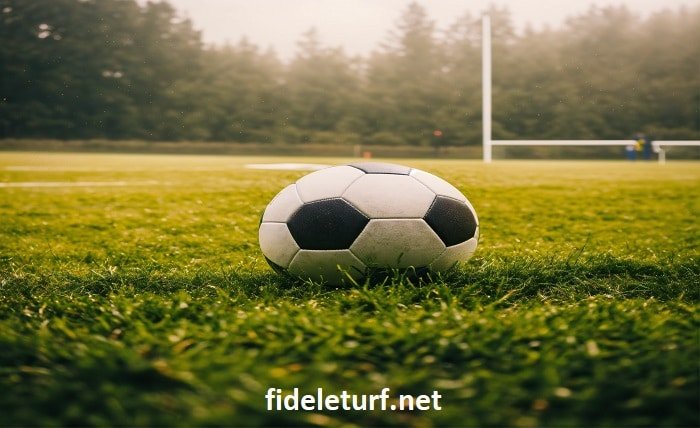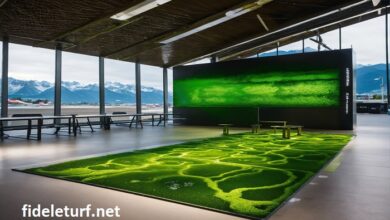The Complete Guide to Field Turf: Advantages, Installation, and Maintenance

Field turf has revolutionized the surface of sports and recreational fields across the globe. Known for its durability, low maintenance, and year-round usability, field turf is an excellent choice for a variety of applications, from football fields to landscaping. This guide delves into everything you need to know about field turf, from selection to upkeep.
1. What is Field Turf?
Field turf refers to artificial grass systems that mimic the look and feel of natural grass. Made from synthetic fibers, field turf is designed to withstand heavy use without the extensive upkeep required by natural grass. It’s an ideal solution for areas that experience extreme weather conditions or where water conservation is a priority.
2. Benefits of Using Field Turf
The primary advantage of field turf is its resilience. It can endure intense play, extreme weather, and heavy foot traffic without showing wear. Additionally, field turf does not require watering, mowing, or pesticide treatments, making it an environmentally friendly and cost-effective option for many communities and facilities.
3. Applications of Field Turf
Field turf is versatile, and suitable for various settings including sports fields, golf courses, residential lawns, and playgrounds. Its ability to provide a safe, consistent playing surface makes it particularly popular among schools, professional sports teams, and municipal parks.
4. Installation Process of Field Turf
Installing field turf involves several critical steps to ensure its longevity and performance. The process includes site preparation, laying a drainage base, installing the turf, and filling it with an infill material such as crumb rubber or sand. Professional installation is recommended to achieve the best results and comply with industry standards.
5. Maintenance Requirements
While field turf is low maintenance compared to natural grass, it still requires care to maintain its appearance and functionality. Regular brushing, occasional rinsing, and infill top-ups are necessary to keep the turf in top condition. Proper maintenance also ensures the safety and performance characteristics of field turf are preserved.
6. Cost Considerations
The initial cost of field turf can be higher than natural grass; however, the long-term savings are significant. The reduction in regular maintenance expenses, such as watering, mowing, and fertilizing, coupled with the turf’s longevity, often justifies the upfront investment.
7. Longevity and Durability
Field turf is designed to last. Most field turf installations can last 10 to 15 years, depending on the level of use and maintenance. Its synthetic materials resist fading, wear, and tear, making it a durable option for high-use areas.
8. Environmental Impact
One of the advantages of field turf is its positive environmental impact, particularly in drought-prone areas. It eliminates the need for watering and harmful chemicals, reducing water usage and chemical runoff. However, concerns about microplastic pollution and the heat-absorbing properties of field turf continue to be addressed by manufacturers and researchers.
9. Choosing the Right Type of Field Turf
Different types of field turf are available, each designed for specific uses and conditions. When choosing field turf, consider factors such as the type of activities it will support, local weather conditions, and expected foot traffic. Consulting with a field turf professional can help in making an informed decision.
10. Innovations in Field Turf Technology
The field turf industry is continually innovating to enhance the performance and environmental friendliness of their products. Recent advancements include new forms of biodegradable infills, improved drainage systems, and fibers that stay cooler in direct sunlight, making field turf an even more attractive option for future projects.
Conclusion
Field turf offers a practical, resilient, and aesthetically pleasing alternative to natural grass for a variety of applications. Whether you’re managing a sports facility, upgrading a playground, or landscaping a business complex, field turf provides a durable, low-maintenance solution that can withstand the rigors of heavy use. Understanding the specifics of field turf selection, installation, and care will ensure that your investment is sound and sustainable for years to come.
FAQ
- Is field turf safe for all sports?
- Yes, field turf is designed to be a safe surface for all sports, providing adequate cushioning and consistent performance characteristics.
- How often does field turf need to be replaced?
- Field turf typically lasts 10 to 15 years, but this can vary based on usage and maintenance practices.
- Canfield turf be recycled?
- Many types of field turf are recyclable at the end of their life. Recycling processes continue to improve as environmental standards become stricter.
- Does field turf get hotter than natural grass?
- Yes, field turf can get hotter than natural grass under direct sunlight. However, innovations such as cooling infills and improved designs are helping to reduce heat absorption.
- How do I clean field turf?
- Cleaning field turf involves removing debris with a leaf blower or brush and occasionally rinsing with water to remove dust and pollen.




